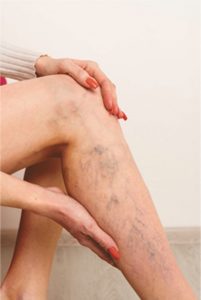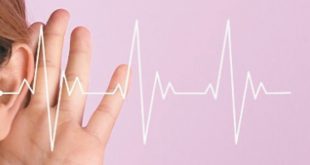

Prevention of varicose veins can be done at home. Improving blood flow and muscle tone might reduce the risk of developing varicose veins. The same measures that treat the discomfort from varicose veins can help prevent them. Try the following:
• Avoiding high heels and tight hosiery
• Changing your sitting or standing position regularly
• Eating a high-fiber, low-salt diet
• Exercising
• Raising your legs when sitting or lying down
• Watching your weight
For many people varicose veins and spider veins (a common, mild variation of varicose veins) are simply a cosmetic concern. For other people, varicose veins can cause aching pain and discomfort. Sometimes varicose veins lead to more-serious problems. If you’re concerned about how your veins look and feel and self-care measures haven’t helped, see your health care provider.
Weak or damaged valves can also lead to varicose veins. Arteries carry blood from the heart to the rest of the body. Veins return blood from the rest of the body to the heart. To return blood to the heart, the veins in the legs must work against gravity.
Muscle contractions in the lower legs act as pumps, and elastic vein walls help blood return to the heart. Tiny valves in the veins open as blood flows toward the heart, then close to stop blood from flowing backward. If these valves are weak or damaged, blood can flow backward and pool in the veins, causing the veins to stretch or twist.
Complications of varicose veins, although rare, can include:
• Ulcers. Painful ulcers can form on the skin near varicose veins, particularly near the ankles. A discolored spot on the skin usually begins before an ulcer forms. See your health care provider immediately if you think you’ve developed a leg ulcer.
• Blood clots. Occasionally, veins deep within the legs become enlarged and might cause leg pain and swelling. Seek medical attention for persistent leg pain or swelling because it can be a sign of a blood clot.
• Bleeding. Occasionally, veins close to the skin burst. Although this usually causes only minor bleeding, it requires medical attention.
To diagnose varicose veins, a health care provider might recommend a test called a venous Doppler ultrasound of the leg. A Doppler ultrasound is a noninvasive test that uses sound waves to look at blood flow through the valves in the veins. A leg ultrasound can help detect a blood clot.
In this test, a health care provider moves a small hand-held device (transducer), which is about the size of a bar of soap, against the skin over the body area being examined. The transducer transmits images of the veins in the legs to a monitor, which displays the results.
Treatment for varicose veins may include self-care measures, compression stockings, and surgeries or procedures. Procedures to treat varicose veins are often done as an outpatient procedure, which means you usually go home on the same day.
Ask your insurer if varicose vein treatment is a covered expense. If varicose vein treatment is done only to improve the appearance of the legs (cosmetic reason), the cost might not be covered by insurance. If self-care and using compression stockings is not easing your symptoms, there are medically prescribed options that we at the Vascular and Vein Center at Gulf Coast Surgeons can recommend for your treatment.
• Sclerotherapy. A health care provider injects the
varicose veins with a solution or foam that scars
and closes those veins. In a few weeks, treated
varicose veins should fade.
The same vein might need to be injected more than once. Sclerotherapy doesn’t require anesthesia and can be done in a health care provider’s office.
• Laser treatment. Laser treatment sends strong bursts of light onto the vein, which makes the vein slowly fade and disappear. No cuts or needles are used.
• Catheter-based procedures using radiofrequency or laser energy. This procedure is the preferred treatment for larger varicose veins. A health care provider inserts a thin tube (catheter) into an enlarged vein and heats the tip of the catheter using either radiofrequency or laser energy. As the catheter is removed, the heat destroys the vein by causing it to collapse and seal shut.
• High ligation and vein stripping. This procedure involves tying off a vein before it joins a deep vein and removing the vein through small cuts. This is an outpatient procedure for most people. Removing the vein won’t keep blood from flowing in the leg because veins deeper in the leg take care of the larger volumes of blood.
• Ambulatory phlebectomy (fluh-BEK-tuh-me). A health care provider removes smaller varicose veins through a series of tiny skin punctures. Only the parts of the leg that are being pricked are numbed in this outpatient procedure. Scarring is generally minimal.
Call the Vascular & Vein Center at Gulfcoast Surgeons today at (239) 344-7061 to make an appointment with a vascular surgeon who specializes in arteries and veins.
Vascular & Vein Center at Gulfcoast Surgeons
877-LEG-PAIN
gulfcoastsurgeons.com
Fort Myers
8010 Summerlin Lakes Dr., Ste. 100
Fort Myers, FL 33907
Cape Coral
1003 Del Prado Blvd., Ste. 303
Cape Coral, FL 33990
Bonita Springs
24301 Walden Center Dr., Ste. 102
Bonita Springs, FL 34134
 Southwest Florida's Health and Wellness Magazine Health and Wellness Articles
Southwest Florida's Health and Wellness Magazine Health and Wellness Articles

